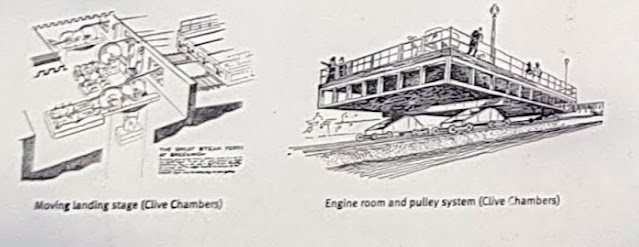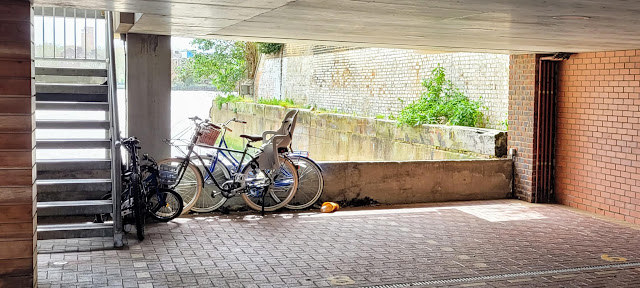 |
| The Greenwich Steam Ferry was an engineering feat, but also a commercial failure. |
Ferries had operated historically from Greenwich, at Billingsgate Dock, Garden Stairs and elsewhere, to the southern tip of the Isle of Dogs, since at least 1333.
Billingsgate was the main dock in Medieval Greenwich and was home to the large Greenwich fishing fleet, which relocated to Hull and Grimsby in the 1850s. This relocation was, in part, due to the arrival of rail transport.
The earliest ferry from the Isle of Dogs to Greenwich was called Potter's Ferry, which began in the 17th century. This lucrative route's rights were coveted by Watermen who wished to control the waterways.
Up until 1812, only foot passengers were permitted to be ferried across the River Thames. Following an 1812 Act of Parliament a horse ferry was established.
 |
| The building where the ferrymen waited between crossings. |
The Billingsgate ferry was replaced after 1821 with one at Horseferry Dock, a little further down river. Billingsgate Dock was widened and enlarged, by an Act of Parliament in 1850, to help improve the docks use by the public.
These ferries ran until they were closed by the Metropolitan Board of Works Act of 1883. Five years later, in 1888, the Greenwich Steam Ferry began operation.
 |
| Johnson's Draw Dock, north bank, close to the pier where passengers embarked on the ferry to Greenwich. |
The Greenwich Steam Ferry was an innovative design whereby passengers and vehicles were transported down the foreshore on moving platforms to waiting ferries. This design, although unique in England, was used throughout America and overcame the problem of reaching the ferry at low tide.
 |
| Diagrams of the moving platforms and pulley system. |
These moving platforms were pulled up and down on cables operated by engines in the cellar of the ferry terminal buildings. These landing platforms could be raised and lowered according to the tide, thus allowing the heavy cargo trucks and carriages to have a smooth access to and from the waiting ferries.
 |
| The north ramp for the Potter's Ferry. |
Commercial and operational difficulties meant that the Greenwich Steam Ferry was suspended in the 1890s. Then, with the Blackwall Tunnel opening in 1897 and construction of the Greenwich Foot Tunnel, beginning in 1899, the Greenwich Steam Ferry finally closed in 1899.
The ferry terminal building, on the south bank, remained standing until the 1990s.
 |
| The ramp on the south foreshore. |
Today, all that remains are the concrete ramps, on the north and south foreshores, and the walls on south terminal still retain the three cable ports, used to raise and lower the moving platforms.
No comments:
Post a Comment